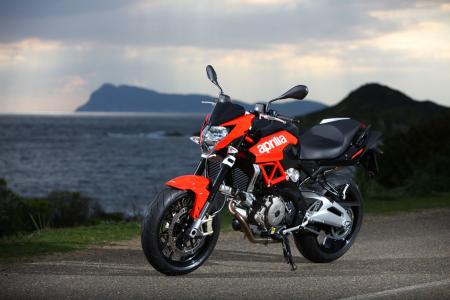 2010 Aprilia Shiver |
But that’s not all; Aprilia has made changes to the Shiver ergonomics, too, with a narrower and more comfortable seat and re-positioned footpegs. The handlebar position has been altered as well. As I discovered on a beautiful stretch of road in the south of France, comfort is impressive. I spent half the day on the Shiver and the rest on the Dorsoduro Factory and there’s a major difference in comfort to the Shiver’s benefit. In addition to improved comfort, the Shiver is also now more sports orientated as the pegs and handlebar have been adjusted to give the bike more front-end feel with more weight over that front.
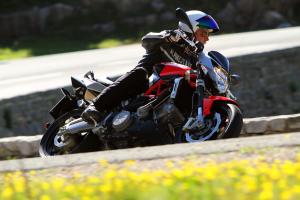 Thanks to its quality chassis, the Shiver loves the corners. |
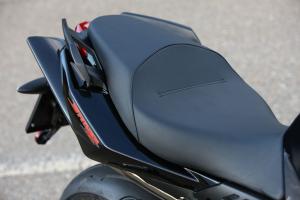 The Shiver's new seat is narrower and more comfortable. |
The mixed steel trellis and aluminium plate frame is the most desirable feature on the Shiver. That’s what gives the Shiver a sporty feel over all other features. The Shiver rides great through the corners and despite having, for Aprilia, basic suspension the feel is great. The Shiver is a bike that loves corners due to that quality chassis from Noale. Despite being heavier than the top competitors, the Shiver feels solid and easy to throw through the corner combinations. The brakes have been upgraded with wavy discs for the 2010 model and the ABS system works well.
The Shiver features the most powerful version of the 750cc V-Twin engine and it produces a claimed 95 hp at 9,000 RPM. I still have to use the six-speed gearbox like a laboring ant, but on these southern French roads it's only fun. The Shiver has more emphasis on the top-end power than the Dorsoduro so at the top-end revs things happen quickly and I found myself wanting more over-rev capacity for the fastest corners.
In Sport mode the throttle is aggressive and not the smoothest throttle in the world. In Touring mode, however, there’s not a hiccup reaching the top-end through a much smoother midrange. I didn’t try Rain mode as it’s only for, yes you guessed it, a rainy day. It’s easy to select modes, but as you use the starter button the engine must be running for you to change them. While riding you can change the riding mode, but only with a closed throttle which is unnecessary as there are no massive changes.
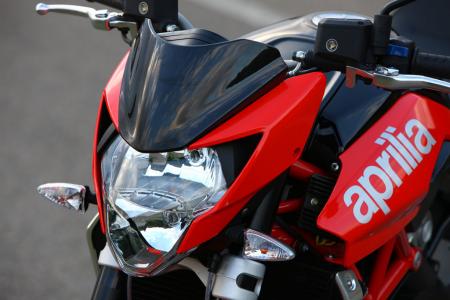 A new small fairing offers a little more wind protection. |
A small fly fairing is now standard equipment on the Shiver 750, which deflects a little more wind than before. As the 750cc V-Twin is friendly enough with a decent midrange I’d have no problems recommending it to new riders. Benefits for a new rider include a comfortable seat, big engine sound and ABS. For more experienced riders it’s difficult to see how you’d keep yourself excited for much more than a year, but it’s a great intro into Italian bikes and V-Twins.
Conclusion
The 2010 Shiver is now a lot more “Italian” and doesn’t share the same dull silver grey paintjob from Piaggio’s scooter range. The ergonomics are better on both the comfort and the sport side. The 750cc V-Twin does its job, but I’d personally soon want to see that 1200cc engine for more oomph in higher gears on low revs because that’s not a strong side.
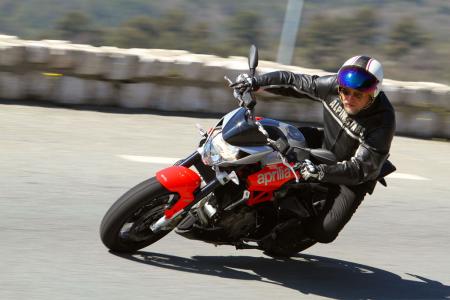 If nothing else, the new Shiver is much better looking. |
Midrange is decent enough but fairly high in the revs for a V-Twin. The brakes are great even with ABS and the Shiver handles better than the engine can do. All in all a great beginner’s bike, but still not enough for somebody looking to move up in the world.

No comments:
Post a Comment